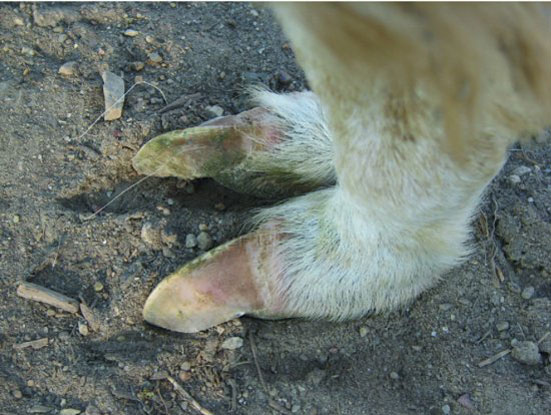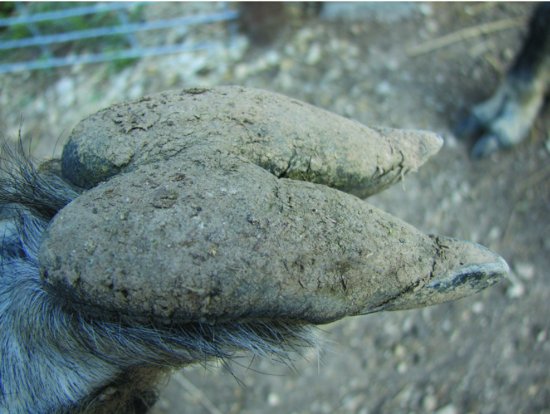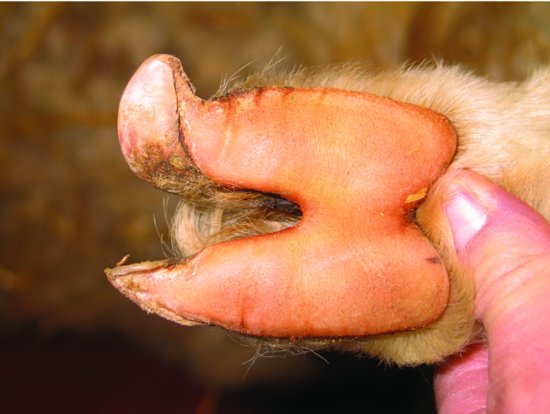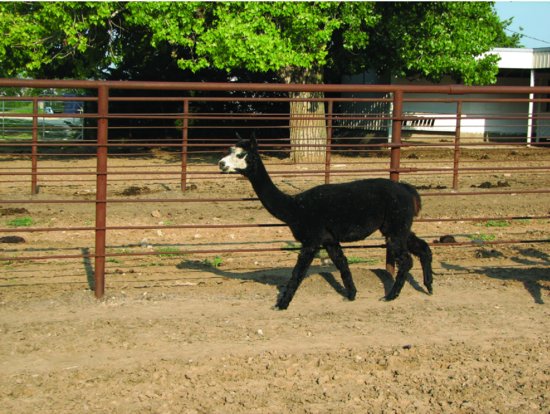Figure 46.3 The foot pad, or slipper, covers the weight-bearing surface. The toenail contributes to traction but not weight bearing.
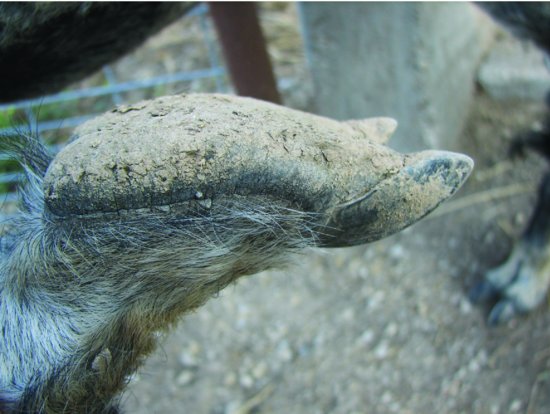
Ambulation
Llamas and alpacas have several gaits including the walk, pace, trot, and gallop. Juvenile camelids have an unusual hopping gait that may be described as “prancing” or “pronging.” Although not always present, the pacing gait can be recognized by both limbs on one side (ipsilateral fore and hind limbs) swinging in unison rather than a forelimb on one side swinging with the contralateral hind limb as is seen with the typical quadruped gaits (Figure 46.6).
Stay updated, free articles. Join our Telegram channel

Full access? Get Clinical Tree


